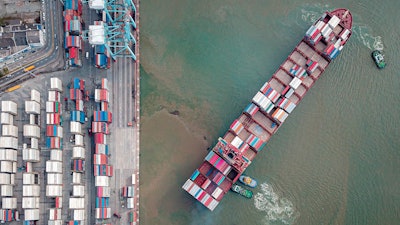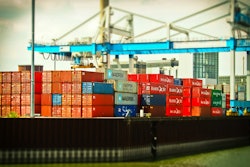
The U.S. Department of Transportation (DOT) is publishing a report that lays out vulnerabilities in the U.S. freight and logistics supply chain and clear-cut actions needed to speed up the movement of goods from ships to shelves.
Building a resilient and efficient supply chain that can withstand the shocks of future large-scale weather, health or other events that will spur economic growth, lower costs for Americans, and create good-paying jobs in the process.
The Biden-Harris Administration has made this work a top priority -- including passing the bipartisan infrastructure law that makes the largest investment in ports in American history, reversing decades of underinvestment in the country’s critical infrastructure.
DOT has already taken both immediate and long-term actions to bolster our supply chains and cut costs for the American people and this report provides a path forward to continue that work, including announcing the availability of $450 million for American ports from the Bipartisan Infrastructure Law this week, by far the department’s largest investment ever, informed by the report's recommendations.
“Decades of underinvestment in our infrastructure, unprecedented consumer demand amid our strong economic recovery, and continued pressure from the pandemic have all put immense strain on our supply chains,” said Transportation Secretary Pete Buttigieg.
“This report lays out critically important steps we can take — both right now, and in the years ahead — to help strengthen our supply chains, create good-paying jobs, and ensure that Americans can affordably and efficiently access the goods they rely on.”
DOT’s supply chain report lays out concrete steps that the federal government, Congress, states, and private companies can take to improve our supply chains now and in the long-term, including investments in both physical and digital infrastructure to support America’s supply chain resiliency.
The report lays out steps to begin to reverse decades of disinvestment and consolidation, which too often has, in certain sectors, led to worse service, higher costs, and poorer working conditions.
DOT is getting to work on recommendations in the report immediately to improve U.S. supply chains, create jobs, and lower costs for the American public. Below are some of the actions DOT is taking now:
- Supply Chain Disruptions Task Force: In June, the President announced the Short-Term Supply Chain Disruptions Task Force, led by DOT, the Department of Commerce, and the Department of Agriculture (USDA). Already, the Task Force has moved ports toward 24/7 operations, reduced long-dwelling containers sitting on the docks, convened stakeholders to discuss how to strengthen the trucking workforce, and worked to increase freight rail service. The recommendations in this report build on the lessons of these immediate efforts.
- Port Infrastructure Development Program (PIDP) Grants: Yesterday, DOT announced $450 million of funding available for ports across the country to make infrastructure upgrades, from constructing new berths, to restoring docks, to extending rail lines and more. Thanks to the Bipartisan Infrastructure Law this is the largest amount of funding through PIDP in American history - and the funding will be informed by the recommendations in this report. These investments in American ports are also part of the Administration’s Port Action Plan, which speeds additional efforts to strengthen U.S. port supply chains.
- Progress at major ports nationwide:
- Port of Oakland: In January, DOT partnered with USDA to help the Port of Oakland set up a new “pop-up” site to help reduce congestion at the Port while making it easier for agricultural companies to fill empty shipping containers and export their goods.
- Port of Savannah: As part of the Port Action Plan, DOT worked with the Port of Savannah to help the Port set up and operate four “pop-up” container yards in Georgia to ease congestion at the Port. Since the “pop-ups” have been in use, container dwell times have been reduced and fewer ships are at anchor outside the Port.
- Ports of Los Angeles and Long Beach: In October, DOT worked with the Ports of Los Angeles and Long Beach to propose fining ocean shippers for long-dwelling containers. Since the fine was proposed, the Ports have seen a more than 65 percent drop in long-dwelling containers.
- Trucking Action Plan: Launched a Trucking Action Plan to both recruit more truck drivers and improve the quality of existing jobs to tackle the profession’s persistently low retention rate. This work includes partnering with the Department of Labor on registered apprenticeship programs, a pilot program for truck drivers between the ages of 18-21 that incorporates registered apprenticeships to ensure safety through rigorous training standards, driver compensation studies, a driver leasing task force, and more.
Read DOT’s full supply chain report here.

















